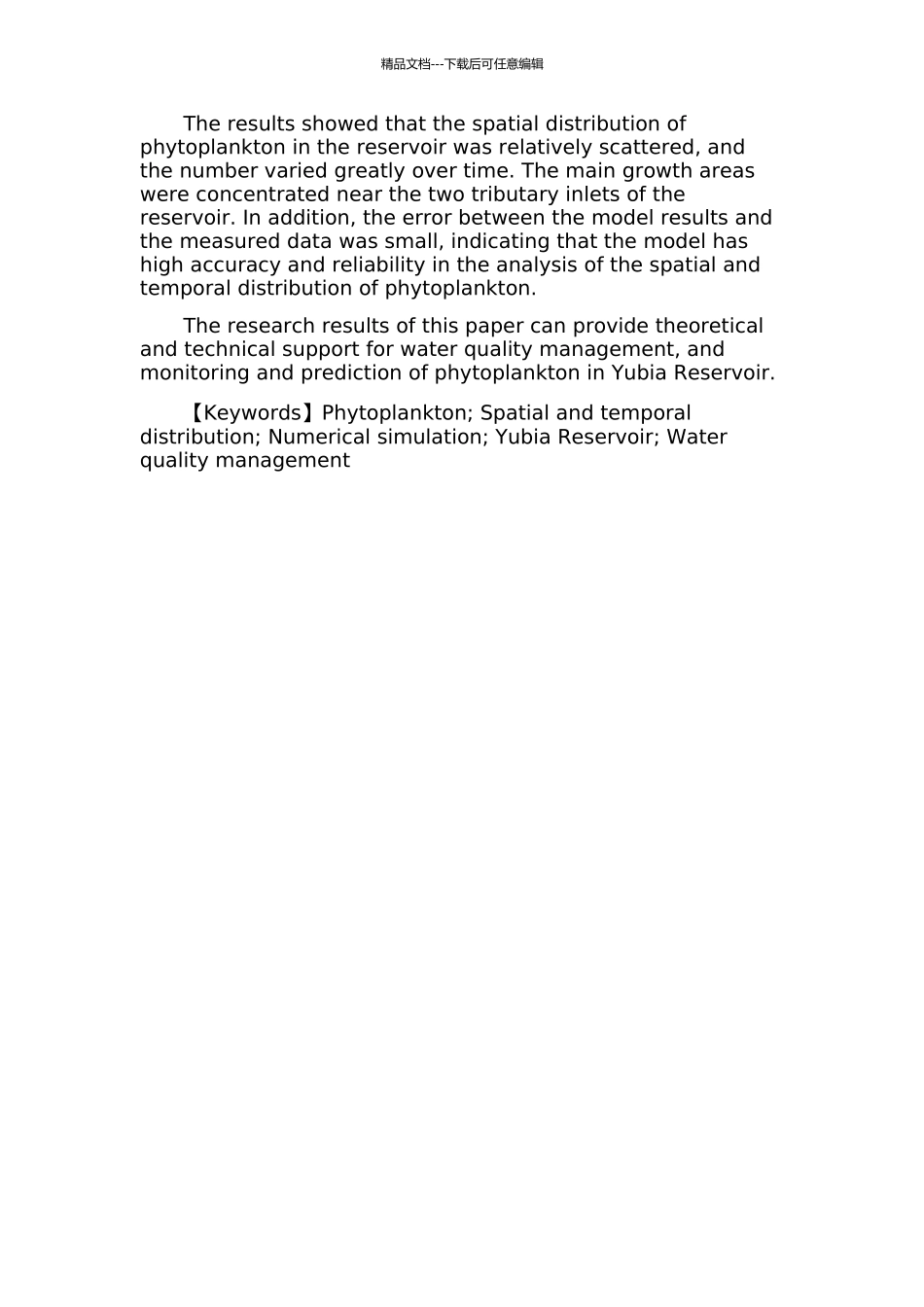精品文档---下载后可任意编辑于桥水库浮游藻类时空分布的数值模拟分析的开题报告【摘要】浮游藻类是水体中重要的生态指标之一,其数量和空间分布对水体的水质和生态环境具有重要影响。因此,对浮游藻类的时空分布进行数值模拟分析具有重要意义。本文以于桥水库为讨论对象,利用数值模拟方法,对浮游藻类的时空分布进行分析。首先,利用海洋模型 SCHISM 建立了于桥水库的数值模型,包含了水动力和水质过程。模型采纳了空间分辨率为 50m 的网格,时间步长为1 hour。其次,根据实测数据,对模型进行了参数校准和验证。最后,运用模型对于于桥水库浮游藻类的时空分布进行了分析。分析结果表明,水库内浮游藻类的空间分布较为分散,且数量随时间变化较大。主要生长区域集中在水库的两个支流入口附近。另外,模型结果和实测数据之间的误差较小,表明模型在浮游藻类的时空分布分析中具有较高的准确性和可靠性。本文的讨论成果可为于桥水库水质管理和浮游藻类的监测和预测提供一定的理论和技术支持。【关键词】浮游藻类;时空分布;数值模拟;于桥水库;水质管理【Abstract】The spatial and temporal distribution of phytoplankton is one of the important ecological indicators in aquatic ecosystems, which has a great influence on water quality and ecological environment. Therefore, it is of great significance to analyze the spatial and temporal distribution of phytoplankton through numerical simulation. In this paper, the spatial and temporal distribution of phytoplankton in Yubia Reservoir was analyzed using numerical simulation method.Firstly, the numerical model of Yubia Reservoir was established using the ocean model SCHISM, which includes hydrodynamic and water quality processes. The model used a grid resolution of 50m and a time step of 1 hour. Secondly, the model was calibrated and validated based on the measured data. Finally, the model was used to analyze the spatial and temporal distribution of phytoplankton in Yubia Reservoir.精品文档---下载后可任意编辑The results showed that the spatial distribution of phy...

